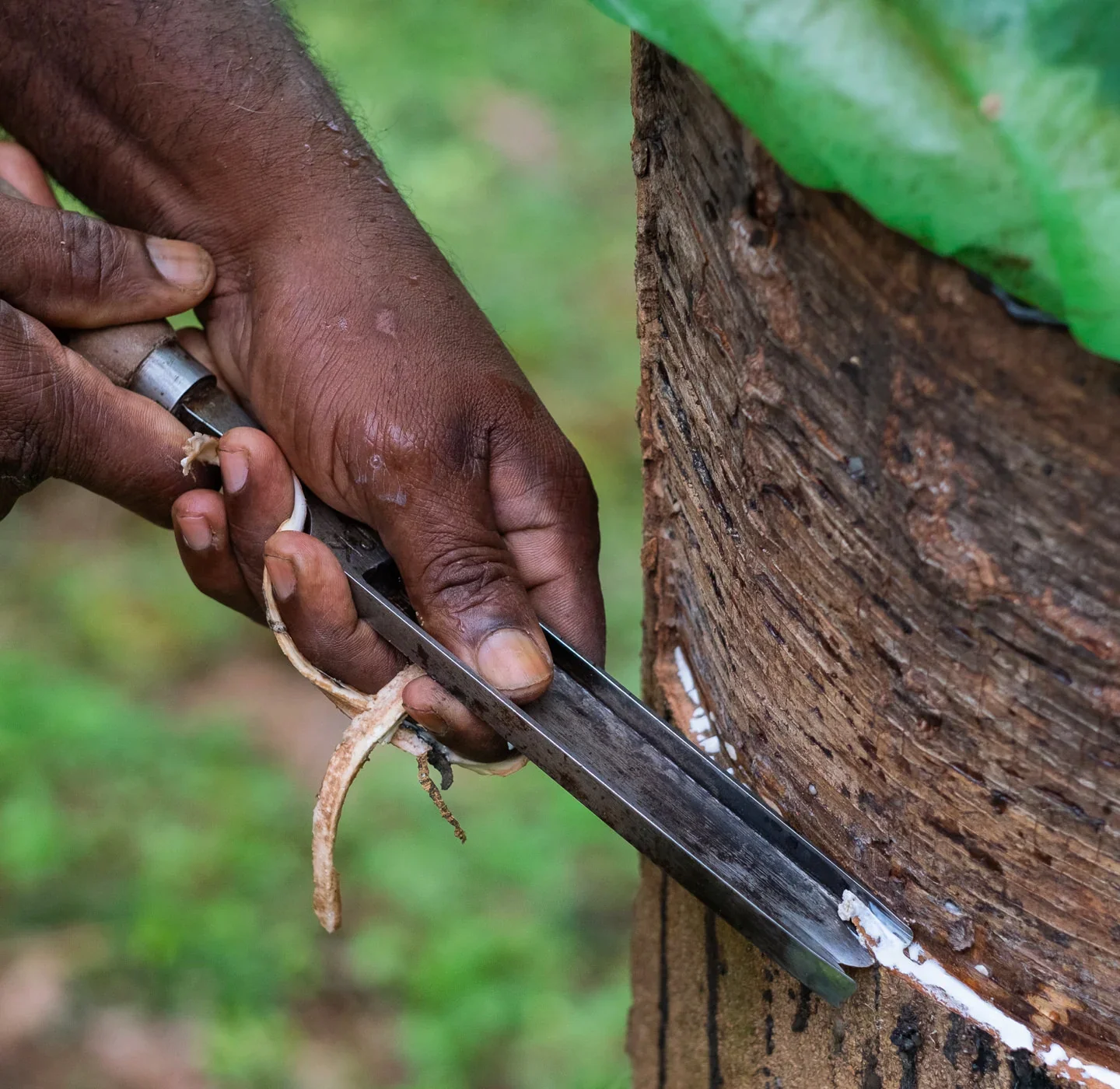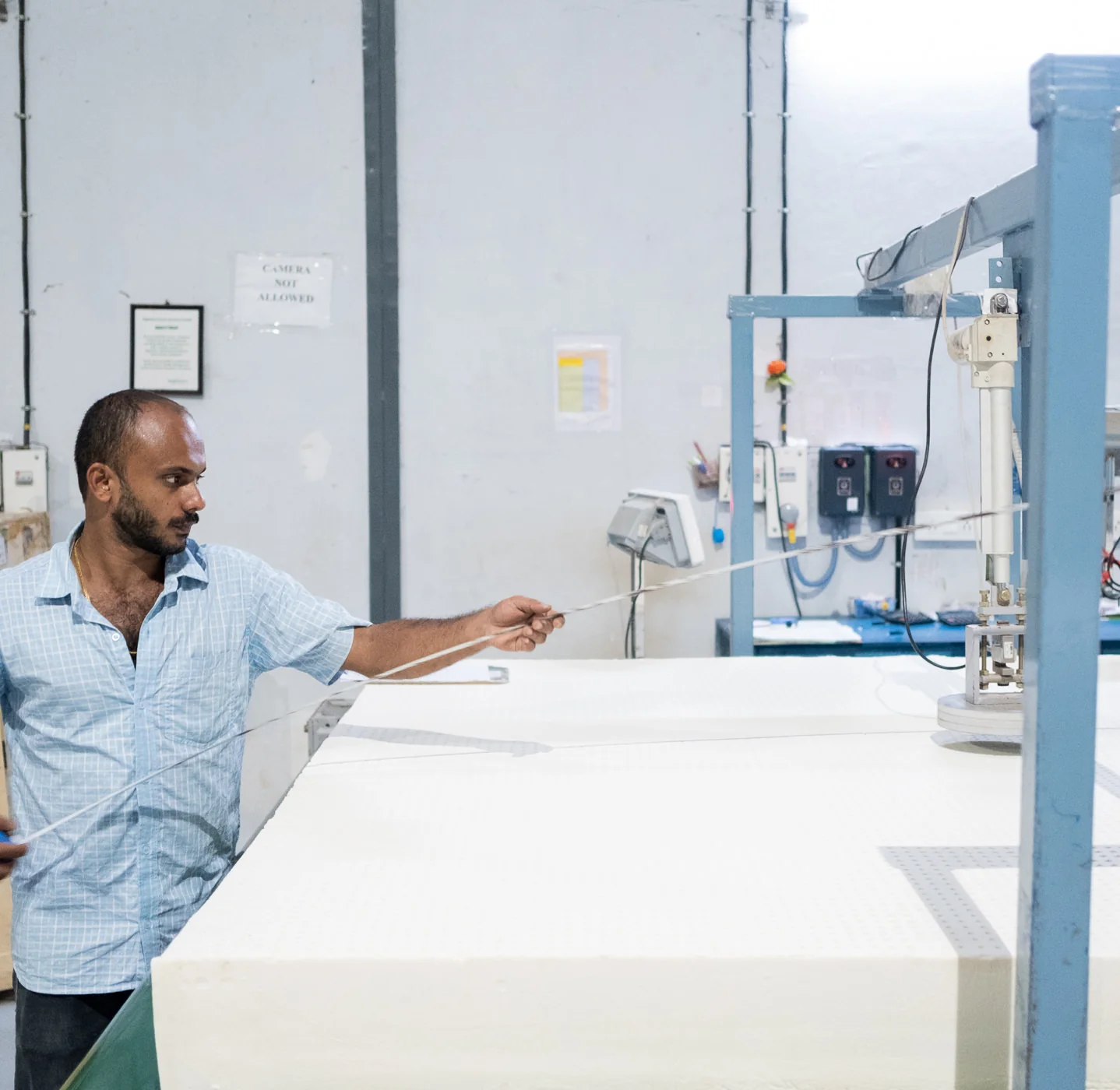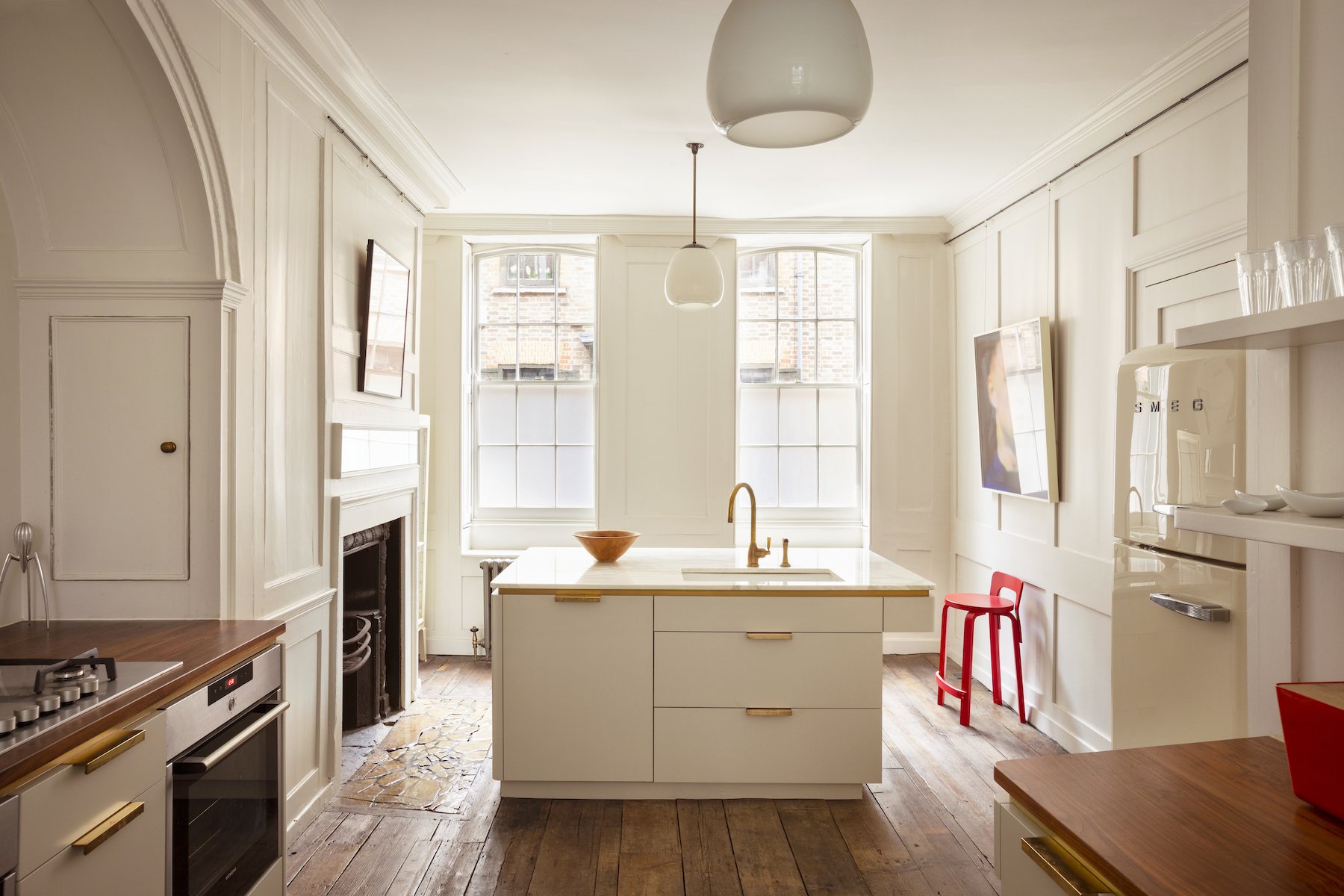
From towering trees to polished planks, the story of wood flooring is often one of transformation, but unfortunately, it is also one of waste.
Remember the last time you bought ‘premium’ wooden flooring? Those perfectly uniform planks with no knot in sight?
In our pursuit of flawless uniformity, the wood flooring industry has historically overlooked a hidden treasure trove of beauty and sustainability: the “imperfections” that make each piece of wood unique.
What if I told you those flawless boards represent one of the most wasteful practices in interior design?
It’s time we discussed zero-waste design, a movement gaining traction and making us rethink our living spaces.
From Waste to Wonder
Zero-waste design isn’t just about re:cycling or re:ducing rubbish—it’s a bold reimagining of how we create and value things.
At its core lies a radical idea: what if we could design in a way that leaves nothing behind?
Something remarkable is happening in Philadelphia’s BOK building. Lobo Mau, traditionally a clothing brand, is transforming its textile remnants into stunning furniture pieces.
They’re shredding leftover fabric to stuff pillows and reupholstering vintage furniture with hemp blends. It’s a brilliant example of how ‘waste’ can become extraordinary.
The zero-waste movement transforms everything from fashion to furniture, challenging our obsession with flawless uniformity.
But nowhere is this shift more striking than in our homes, particularly how we think about wood flooring.
The Hidden Cost of Perfection
You might be surprised to learn that up to 30% of wood is discarded in traditional flooring production. That’s not just installation off-cuts—it’s perfectly good wood rejected simply because it doesn’t meet arbitrary aesthetic standards.
These “rejected” pieces often feature the most captivating elements of the tree’s natural story – rich knots, dramatic grain patterns, and distinctive colour variations.
Think about that for a moment.
For every 100 square metres of premium flooring, up to 30 square metres of wood might be wasted. It’s like throwing away perfectly good vegetables because they’re not quite the right shape for supermarket shelves.
Zero Waste Is More Than Just a Buzzword
Zero waste isn’t simply about recycling or reducing rubbish. It’s a comprehensive approach to design and manufacturing that considers the entire lifecycle of materials.
As Nicole Haddad of Lobo Mau puts it,
“If sustainability is not considered in the design of a product, we consider that to be a design flaw.”
This philosophy is gaining traction across industries, driving innovation and creativity unexpectedly.
In textiles, designers meticulously craft patterns that utilize entire pieces of fabric, minimizing scraps and maximizing resource efficiency.
Furniture makers are embracing ingenuity, finding innovative ways to repurpose every scrap of material, from offcuts to sawdust.
Even mattress manufacturers like Avocado Green Mattress are joining the movement, transforming leftover wood from bed frames into stylish, functional furniture.
This holistic approach is now re:shaping the wood flooring industry, challenging traditional practices and encouraging a more sustainable and aesthetically rich design approach.
By embracing wood’s natural variations and minimizing waste at every stage, from sourcing to installation, zero-waste design transforms our floors and our relationship with the natural world.
Re:thinking Wood Flooring
The most captivating parts of wood are often the ones we’ve been taught to avoid.
Every knot, colour variation, and distinctive grain pattern tells the unique story of a tree’s life – rather than fingerprints, no two pieces are exactly alike.
The maths behind traditional wood flooring is quite shocking.
While suppliers suggest ordering 10% extra for wastage during installation, the manufacturing process bins nearly a third of each tree.
Between 28% and 32% of perfectly good wood never makes it to our homes simply because it doesn’t match our rigid ideas of perfection.
But things are changing.
We create floors celebrating these natural characteristics by mixing different plank widths and embracing wood’s natural variations.
Each knot and grain pattern adds depth to the space, creating rooms that feel more connected to nature.
Our approach celebrates wood in its natural state, embracing the characteristics that others might reject.
We transform what the industry typically discards through careful sorting and thoughtful design into striking features.
The result is flooring that is not only environmentally conscious but also respects “the soul of the tree.”
Practical Steps Towards Zero Waste Design
For Manufacturers
- Design with whole materials in mind
- Embrace natural variations and characteristics
- Develop innovative ways to use off-cuts and remnants
- Create flexible sizing options to reduce installation waste
For Designers
- Choose suppliers who prioritise zero-waste practices
- Consider mixed-width flooring options
- Incorporate reclaimed materials
- Design spaces that celebrate natural variations
For Homeowners
- Look beyond traditional ‘premium’ grades
- Consider character-grade wood flooring
- Ask about waste reduction practices
- Support companies with zero-waste initiatives
The Beauty of Responsibility
Zero-waste design isn’t just about reducing environmental impact—it’s about changing how we see beauty in our homes.
It’s about recognising that perfection doesn’t mean uniformity and that character often comes from what others might consider flaws.
The next time you choose flooring, furniture, or home décor, consider products that embrace zero-waste principles.
These thoughtfully designed pieces add sustainability and unique character to your space.
Remember, as with all meaningful changes, the shift towards zero waste design starts with small steps.
Whether you’re a manufacturer, designer, or homeowner, every decision to reduce waste matters.
After all, the most sustainable option is often the most beautiful.
References:
- Lobo Mau. “Lobo Mau | Philadelphia, PA.” Lobo Mau. Accessed November 22, 2024. https://lobomau.com/.
- Lobo Mau. “Zero Waste Furniture Exhibit.” Lobo Mau. Accessed November 22, 2024. https://lobomau.com
- Uptown Floors. “Measuring for Hardwood Flooring – Waste Factor, Overage.” Uptown Floors. Accessed November 22, 2024. https://www.uptownfloors.com
- Woodweb. “Wood Flooring Yield and Waste Factor.” Woodweb. Accessed November 22, 2024. https://woodweb.com.
- Zero Waste Design. “Zero Waste.” Zero Waste Design Guidelines. Accessed November 22, 2024. https://www.zerowastedesign.org/.
- Hardwoods4Less. “Grading Scale – Hardwoods4Less.” Hardwoods4Less. Accessed November 22, 2024. https://hardwoods4less.com.
- JFJ Wood Flooring. “How Much Wastage to Allow for with Engineered Wood Flooring.” JFJ Wood Flooring. Accessed November 22, 2024. https://www.jfjwoodflooring.co.uk/
- Łódź Design Festival. “Hardwood Floor Zero Waste Oak Air.” Łódź Design Festival. Accessed November 22, 2024. https://lodzdesign.com
- Redress Design Awar. “Damini Mittai” Accessed November 22, 2024. Cover Image. https://www.redressdesignaward.com/2019/damini-mittai
























